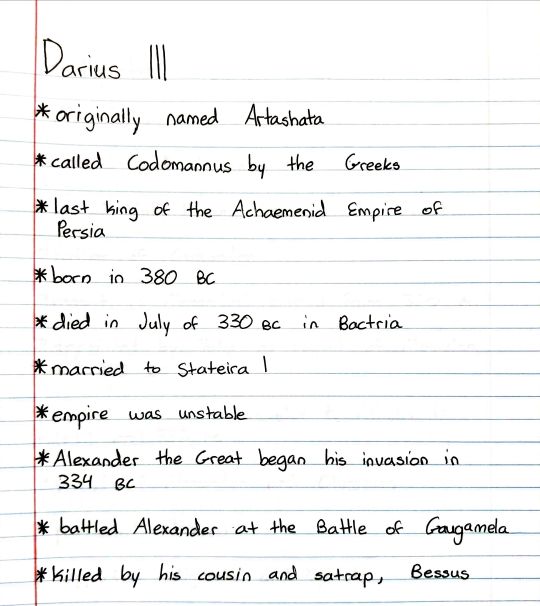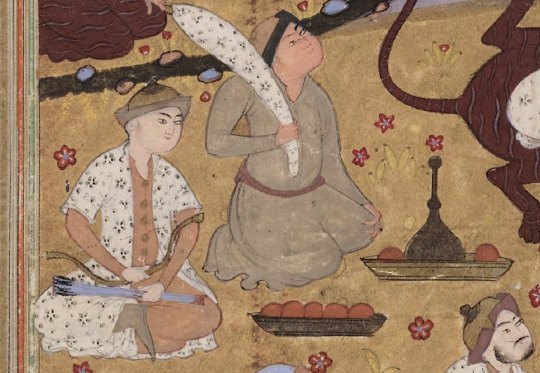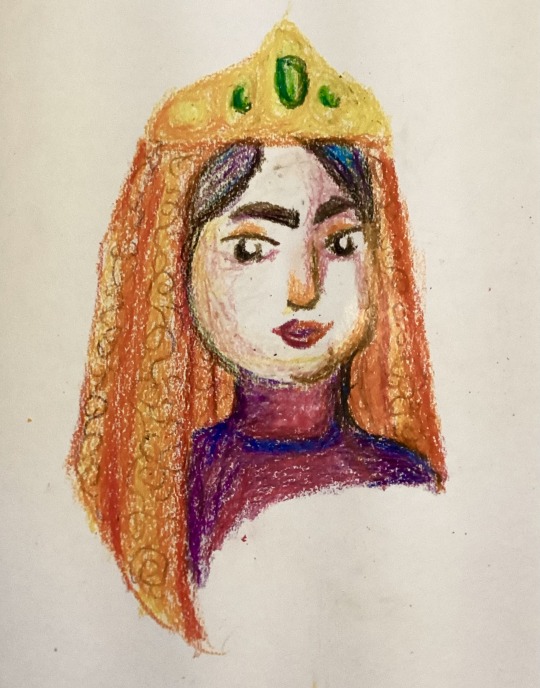#Persian History
Text
Time Travel Question 25: Medievalish I
These Questions are the result of suggestions from the previous iteration.
Please add new suggestions below if you have them for future consideration.
The first person who suggested this one first was incredibly poetic in the notes.
#Time Travel#Middle Ages#Indigenous History#Pueblo#Anasazi#Lorenzo the Great#Florence#Cathedrals#Aotearoa#North American History#South American History#Central American History#African History#Irish History#Malaysian History#Persian History#Metalworking#Japanese History#The Pillow Book#Murasaki Shikibu#The Tale of Genji#Sei Shōnagon#Carolingians
101 notes
·
View notes
Text
10 notes
·
View notes
Text

Scythian horseman plaque from Kul-Oba barrow 4th C. BCE. With holes so it could be sewn onto clothing. 4.2 x 3.9cm.
"Beyond this desolation live the Thyssagetae; four great rivers flow from their country through the land of the Maeetians, and issue into the lake called the Maeetian; their names are Lycus, Oarus, Tanaïs, Syrgis. When Darius came into the desolate country, he halted in his pursuit and camped on the Oarus river, where he built eight great forts, the ruins of which were standing even in my lifetime, all at an equal distance of about seven miles from one another. While he was occupied with these, the Scythians whom he was pursuing doubled north and turned back into Scythia. Then, when they had altogether vanished and were no longer within the Persians' sight, Darius left those forts only half finished, and he too doubled about and marched west, thinking that those Scythians were the whole army, and that they were fleeing toward the west. But when he came by forced marches into Scythia, he met the two divisions of the Scythians, and pursued them, who always kept a day's march away from him; and because Darius would not stop pursuing them, the Scythians, according to the plan they had made, fell back before him to the countries of those who had refused their alliance, to the land of the Black-cloaks first.
The Scythians and Persians burst into their land, agitating them; and from there, the Scythians led the Persians into the country of the Man-eaters, agitating them too; from there, they drew off into the country of the Neuri and, agitating them also, fled to the Agathyrsi. But the Agathyrsi, seeing their neighbors fleeing panic-stricken at the Scythians' approach, before the Scythians could break into their land sent a herald to forbid them to set foot across their borders, warning the Scythians that if they tried to break through they would have to fight with the Agathyrsi first. With this warning, the Agathyrsi mustered on their borders, intending to stop the invaders. When the Persians and the Scythians broke into their lands, the Blackcloaks and Man-eaters and Neuri put up no resistance, but forgot their threats and fled panic-stricken north into the desolate country. But warned off by the Agathyrsi, the Scythians made no second attempt on that country, but led the Persians from the lands of the Neuri into Scythia."
-Herodotus, The Histories, Book 4.123-125
#scythian#scythian gold#persian history#darius the great#ancient history#history#herodotus#literature#antiquities#museums#archaeology#4th century bce
208 notes
·
View notes
Text
This is one of the best, factual explanations I've seen on the history of the veil in Iran.
154 notes
·
View notes
Text

Esther first appears in the story as one of the young maidens collected into the king’s harem as possible replacements for Vashti, the banished wife of King Ahasuerus (Xerxes I, reigned 485—465 B.C.E.). She is identified as the daughter of Avihail and the cousin and adopted daughter of Mordecai, from the tribe of Benjamin. Not much is revealed about her character, but she is described as beautiful and obedient, and she appears to be pliant and cooperative. She quickly wins the favor of the chief eunuch, Hegai, and, when her turn comes to spend the night with the king, Ahasuerus falls in love with her and makes her his queen. All this takes place while Esther keeps her Jewish identity secret.
After Esther becomes queen, her cousin Mordecai becomes involved in a power struggle with the grand vizier Haman the Agagite, a descendant of an Amalekite king who was an enemy of Israel during the time of King Saul ( Sam 15:32). Mordecai refuses to bow before Haman, and this so infuriates Haman that he resolves not only to put Mordecai to death, but also to slaughter his entire people. He secures the king’s permission to do this, and a date is set, Adar 13 (this episode determines the date of the festival of Purim, a popular Jewish festival). When Mordecai learns of Haman’s plot, he rushes to the palace to inform Esther, weeping and clothed in sackcloth.
#perioddramaedit#history#edit#esther#queen esther#xerxes i#king xerxes#persian history#jewish history#the book of esther#merve bolugur#aesthetic#women of bible#bibleedit#bible women#biblical myth#biblical mythology#bible#biblical#biblicaledit#women of history#biblical women#mordecai#BC#historical women
55 notes
·
View notes
Text
On This Day In History
August 27th, 865: Abu Bakr al-Razi, one of the most important figures of medical history, is born.
A Persian polymath and proponent of experimental medicine, he is known for studying and treating smallpox, as the father of pediatrics, and a pioneer of obstetrics and ophthalmology. He is the first known human to recognize the reaction of the eye's pupil to light. He wrote extensively on many medical topics, including medical ethics, and his works were massively influential in medical education across Europe.
#history#world history#persian history#Abu Bakr al-Razi#medical history#Razi#al-Razi#Rhazes#Islamic Golden Age
107 notes
·
View notes
Text

Patreon
#studyblr#notes#history#historyblr#world history#western civ#western civilization#greek history#alexander the great#codomannus#darius III#artashata#persia#persian history#battle of gaugamela#bessus#darius of persia#bactria#ancient history#ancient greece#ancient persia
2 notes
·
View notes
Text
Historical Fact 1: Garden gnomes were wiped out by the Persian Empire under the rule of Darius I.
Edit: proof

10 notes
·
View notes
Text

The Sassanian Military, at its peak, was one of the world’s most formidable. Under the command of the Ērān-Spahbad, the division of Ērānshahr’s armies was usually as follows:
1. Paygān: Light conscript infantry armed with wicker or leather shields and short spears. In times of struggle, conscripted farmers may have used agricultural tools such as pitchforks or sickles. Some conscripts came from far-flung provinces and brought their foreign military traditions with them, such as the Kurds, Anatolians, Armenians, and Arabs. The Daylamites, from the Caspian province of Daylam, were particularly famed for their prowess in hand-to-hand and close-quarters combat.
2. Foot Archers: Often conscripted, though instruction in archery required more training time, making these soldiers slightly more elite. For this reason, standing archers’ ranks were divided between Kamāndār-ī-Pāyahdag (conscripts) and Kamāndār-ī-Shahi (professionals or nobles)
3. Cavalry Archers (not pictured): Carrying over the tradition of their Arsacid predecessors, Sassanian armies often rode with a large contingent of light cavalry archers for their maneuverability and potential for ranged weakening of enemy forces. These archers would dress in lighter clothing than their heavy cavalry counterparts and were armed with the mighty composite bow, which could be drawn and fired quickly and while in motion.
4. Cataphracts: These heavily armored horsemen were the vanguard of every Sassanid force. Much of their ranks were comprised of elite warriors from the minor nobility, known as the Savaran. They donned full-body scale armor and full-coverage helmets, with their horses’ barding being of a similar construction. They carried many weapons, including the Kontos (an adapted version of the Greek Xyston), short and long swords, bludgeons such as maces and hammers, and even (according to one Roman source) a single-use crossbow that could discharge multiple arrows at medium range.
#history#persian history#persia#ancient persia#ancient rome#arms and armor#military history#roman history#classical history#middle east#iran#medieval warfare#medieval weapons
5 notes
·
View notes
Text
The urge I have to write an entire epic fantasy series that retells the history of Alexander the Great in a gay romance with Darius the Great and Boudicca as a queen who destroyed the Roman Empire.
This urge is so powerful that I yearn to do this with every atom in my body. I will make my gay romance stories between these two kings and I will make a story about a vengeful queen mother defeating an empire with her vengeful army
4 notes
·
View notes
Photo

Detail of the Court of Gayumars from the Shahnameh - the national epic of Iran and Afghanistan.
(Image from the Royal Ontario Museum)
#illuminated manuscript#shahnameh#shahnama#manuscript#ferdowsi#iran#afghanistan#iraq#history#Iranian history#afghan history#Persian history#art#art history#gayumars#court#farsi#dari#persian#book of kings#majlis#luxury#oppulence#islamic art#islamic tradition#afghan art#Iranian art#Persian art#Iraqi art#greater iran
11 notes
·
View notes
Link
n this documentary episode we explore the Greco-Persian wars to understand why the Persians failed to conquer Greece. The video begins with a historical overview of the Achaemenid Persian Empire and then an analysis of the Ionian Revolt which led to war. We then look at what the Persian army of Darius and Xerxes wished to achieve and see to what extent these objectives were met. This includes looking at the Battle of Marathon, Thermopylae, Salamis, Mykale, and more which featured Greek armies of Athens, Sparta and more.
#grecopersianwars#greco persian wars#greco-persian wars#greece#greek history#persian history#ancient history#Achaemenid Persian Empire#mellothanato#morhistory#morhellenomania#hellenomania#darius#xerxes#greek army#history
6 notes
·
View notes
Video
youtube
Ibn Sina's cosmological argument changed #theology and #philosophy forever. Few thinkers since have been as creative and ahead of their time than the #persian polymath and physician.
#stoic#islam#islamic philosophy#theology#god#religion#ibn sina#persian history#islamic golden age#science#middle east#aristotle#plato#school of life
6 notes
·
View notes
Text




Figurine of a Persian man 500-300 BCE
"The Persian nation contains a number of tribes as listed here. ... : the Pasargadae, Maraphii, and Maspii, upon which all the other tribes are dependent. Of these, the Pasargadae are the most distinguished; they contain the clan of the Achaemenids from which spring the Perseid kings. Other tribes are the Panthialaei, Derusiaei, Germanii, all of which are attached to the soil, the remainder—the Dai, Mardi, Dropici, Sagarti, being nomadic."
-Herodotus, The Histories, Book 1.101 & 125
#persian#persian history#iranian#achaemenid#antiquities#antiquity#statue#museums#artifacts#ancient history#history#pagan#paganism
88 notes
·
View notes
Photo

Day 14: Zeynab Begum!
Zeynab Begum was the daughter of Shah Tahmasp I of Safavid Iran and Huri-Khan Khanum, a Georgian princess. She came of age in a tumultuous era for the Safavids. After her father’s death the empire fell into turmoil, and the neighboring Ottomans took advantage of the chaos to declare war. In a bid to shore up support, Zeynab’s brother married her to a prominent general, Ali-Qoli Khan Shamlu, but the marriage was on paper only - the couple never lived together and may well have never touched.
Nevertheless, Zeynab Begum and her husband did have one thing in common: determined support for the same claimant, her young nephew Prince Abbas. Ali-Qoli defied orders to have the child executed, instead raising a rebellion, while she rallied support among court officials. When Abbas took the throne, Zeynab Begum (whose husband was soon killed in battle) was not only the matriarch of the harem (home to the Shah’s consorts and his other female relatives) but also one of her nephew’s closest advisors. She governed her own lands, built trading posts, and survived a temporary exile when her faction was ousted from power.
She maintained her influence during the early reign of Abbas’ grandson and heir, Safi; indeed, for a period of time she essential ruled the empire. In adulthood, however, an increasingly autocratic Safi purged the government. Many ministers were executed, and Zeynab Begum was banished from court once more; this time, there would be no return.
Exile, however, treated her more like retirement. She maintained control of her personal fortune, and, for the last decade of her life, settled down in peace away from the court. She died in 1640, and is buried in the famous Imam Rena shrine.
#zeynab begum#history#iranian history#persian history#safavid#awesome ladies of history#october 2022#my art#oil pastels
3 notes
·
View notes
Text
سبک تاریخنگاری میرزا فتحعلی آخوندزاده
میرزا فتحعلی آخوند زادهنمی توان از تاریخ روشنفکری در ایران سخن گفت و پای میرزا فتحعلی آخوند زاده را به نوشتار باز نکرد. آخوند زاده یک نمونه کامل و کلاسیک از روشنفکری ضد دین در ایران قرن نوزدهم میلادی است و به تعبیری می توان او را امام روشنفکران، علی الخصوص روشنفکران غیر دینی دانست. باید توجه داشت که جریان روشنفکری غیر دینی در ایران همچون دیگر مناطق جهان اسلام، دغدغه ها و بسترهای فکری مشترکی را…
View On WordPress
#historiography#History#iran history#iranshahr#islamic study#Middle East#osullectures#persian history#مورخ#مشروطه#هویت تاریخی#آخوندزاده#ایران#تاریخ#تاریخ ایران#تاریخنگاری#جنگ هویتها
0 notes